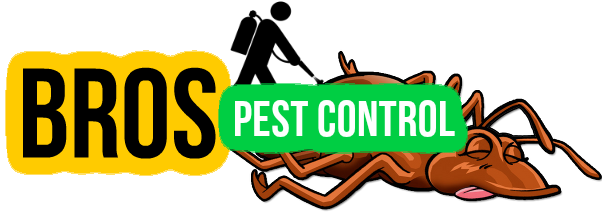Bee Removal Topeka, KS | Yellow Jackets, Wasps, Hornets
Topeka Bee Control & Extermination
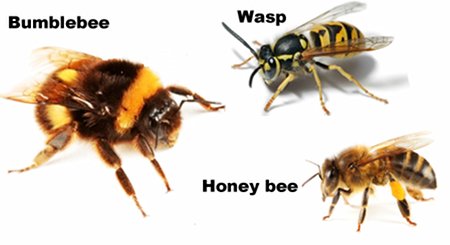 Bro’s Pest Control specializes in bee removal Topeka, KS. Bro’s Pest Control is your connection to safe bee removal and extermination services in the Topeka area. Exterminators within our network specialize in: wasp control, hornet control, bee swarm removal and bee removal. Pest control services can also include sealing off the entrances and exits, repairs from hive and damage, as well as traps. Bee’s can pose danger, especially if a loved one is allergic. Contact Bro’s Pest Control today to control your bee problem in the Topeka area.
Bro’s Pest Control specializes in bee removal Topeka, KS. Bro’s Pest Control is your connection to safe bee removal and extermination services in the Topeka area. Exterminators within our network specialize in: wasp control, hornet control, bee swarm removal and bee removal. Pest control services can also include sealing off the entrances and exits, repairs from hive and damage, as well as traps. Bee’s can pose danger, especially if a loved one is allergic. Contact Bro’s Pest Control today to control your bee problem in the Topeka area.
For Bee Control Topeka, Kansas Call, 1-888-497-9069
Specialized Bee Removal & Extermination
Bro’s Pest Control professionals can help you with all different bee problems including:
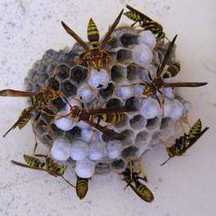 Removal of hives, bee swarm removal, yellow jacket removal, hornet removal, bumble bee removal and various of bee removal jobs. Bee removal Topeka, KS experts will come out to your home or business and remove unwanted bee’s safely and at a reasonable price. Same day appointments for bee removal can be scheduled, if needed. Ready for bee control Topeka, KS? Contact us today by calling 1-888-497-9069.
Removal of hives, bee swarm removal, yellow jacket removal, hornet removal, bumble bee removal and various of bee removal jobs. Bee removal Topeka, KS experts will come out to your home or business and remove unwanted bee’s safely and at a reasonable price. Same day appointments for bee removal can be scheduled, if needed. Ready for bee control Topeka, KS? Contact us today by calling 1-888-497-9069.
Bee, Wasp & Hornet Treatment
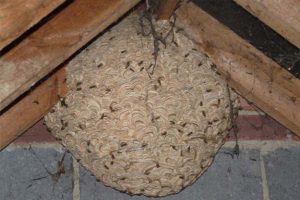 Bee, wasp or hornet treatment Topeka, KS will require one of our bee specialists to come out to your home to perform a free inspection. They will arrive fully equipped to eliminate your bee issue. The bee exterminator will identify the location of the nest, depending on the type of stinging insect problem you have, and eliminate/remove the problems to protect your family’s health and safety. In the case of a hornets nest, the technician will treat the nest and return to remove it after insuring that all the pests have been killed.
Bee, wasp or hornet treatment Topeka, KS will require one of our bee specialists to come out to your home to perform a free inspection. They will arrive fully equipped to eliminate your bee issue. The bee exterminator will identify the location of the nest, depending on the type of stinging insect problem you have, and eliminate/remove the problems to protect your family’s health and safety. In the case of a hornets nest, the technician will treat the nest and return to remove it after insuring that all the pests have been killed.
Bees are flying insects closely related to wasps and ants, known for their role in pollination and, in the case of the best-known bee species, the European honey bee, for producing honey and beeswax. For bee removal Topeka, KS — contact us today!
Bee Extermination Topeka, Kansas
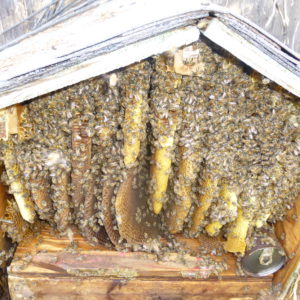 Assuming the bee's in question are not honeybee's, a Bro's Pest Control expert can exterminate them. Every year, beekeepers are called upon to give advice regarding the removal of honey bees (and other insect pests) from homes and buildings since honey bees are NOT to be exterminated. Honey Bee removal on the other hand, includes relocating the bee's to a different location. If you have a bumble bee, wasp or yellow jacket bee problem in Topeka, KS -- then extermination can be done. For wasp, bumble bee, hornet or yellow jacket extermination Topeka, KS -- please get in touch with Bro's Pest Control today!
Assuming the bee's in question are not honeybee's, a Bro's Pest Control expert can exterminate them. Every year, beekeepers are called upon to give advice regarding the removal of honey bees (and other insect pests) from homes and buildings since honey bees are NOT to be exterminated. Honey Bee removal on the other hand, includes relocating the bee's to a different location. If you have a bumble bee, wasp or yellow jacket bee problem in Topeka, KS -- then extermination can be done. For wasp, bumble bee, hornet or yellow jacket extermination Topeka, KS -- please get in touch with Bro's Pest Control today!
Topeka, Kansas
Topeka (/toʊˈpiːkə/;[9][10]Kansa: Tó Pee Kuh) is the capital city of the U.S. state of Kansas and the seat of Shawnee County.[2] It is situated along the Kansas River in the central part of Shawnee County, located in northeast Kansas, in the Central United States. As of the 2010 census, the city population was 127,473.[11] The Topeka Metropolitan Statistical Area, which includes Shawnee, Jackson, Jefferson, Osage, and Wabaunsee counties, had a population of 233,870 in the 2010 census.
The name Topeka is a Kansa-Osage sentence that means "place where we dug potatoes",[12] or "a good place to dig potatoes".[13] As a placename, Topeka was first recorded in 1826 as the Kansa name for what is now called the Kansas River. Topeka's founders chose the name in 1855 because it "was novel, of Indian origin and euphonious of sound."[14][15] The mixed-blood Kansa Native American, Joseph James, called Jojim, is credited with suggesting the name of Topeka.[16] The city, laid out in 1854, was one of the Free-State towns founded by Eastern antislavery men immediately after the passage of the Kansas–Nebraska Bill. In 1857, Topeka was chartered as a city.
Bombus pensylvanicus, the American bumblebee or Sonoran bumblebee, is a species of bumblebee native to North America. It occurs in eastern Canada, throughout much of the United States, and much of Mexico.[2]
Bombus pensylvanicus tends to live and nest in open farmland and fields. It feeds on several food plants, favoring sunflowers and clovers.[3] Once the most prevalent bumblebee in the southern United States as its name suggests, populations of Bombus pensylvanicus have decreased significantly in recent years.[4]
